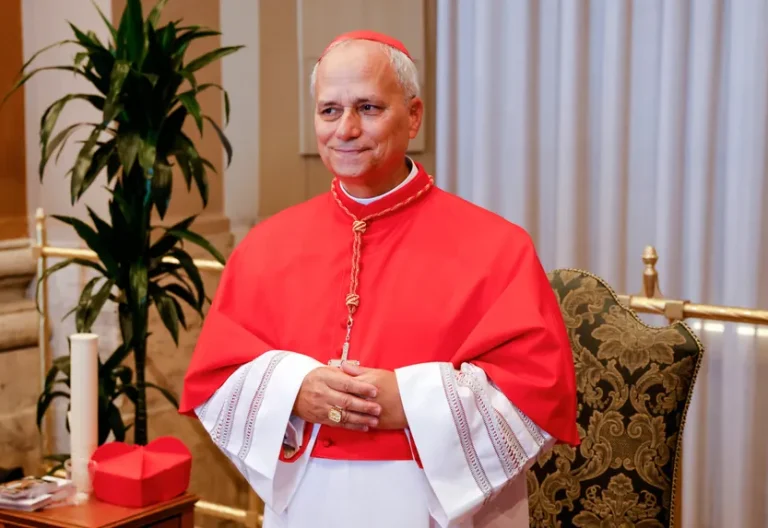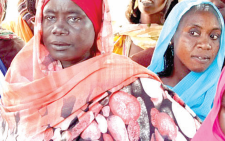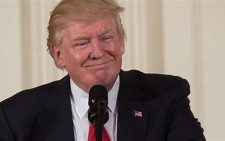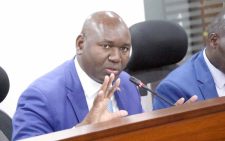‘Peace be with all you,’ Pope Leo XIV says in first address

TIn his first public address as Pontiff, newly elected Pope Leo XIV called for unity, peace, and a renewed sense of faith, declaring that “the world needs His light” in reference to Jesus Christ.
Speaking from the balcony of St. Peter’s Basilica, Pope Leo XIV, formerly Cardinal Robert Francis Prevost, invoked the memory of his predecessor, Pope Francis, who died on Easter Monday.
Pope Leo XIV further emphasised bridge-building, dialogue, and inclusivity as central pillars of his papacy.
He said, “Let us hold in our hearts the faint yet powerful voice of Pope Francis, who once blessed the city of Rome. The Pope who, on that Easter morning, extended his blessing not only to Rome but to the entire world.
“Allow me now to continue that blessing: God loves us. God loves everyone. Evil will not prevail. We are all in the hands of God. Therefore, without fear, and united, hand in hand with God and with one another, let us move forward together.
“We are the disciples of Christ, and Christ goes before us. The world needs His light. Humanity needs Him as the bridge to God and His boundless love.
“Let us work together to build bridges through dialogue and encounter, that we may become one people, living always in peace.
“I thank Pope Francis deeply. I also wish to express my heartfelt gratitude to my brother Cardinals who have chosen me to be the successor of Peter, to walk with you as one united Church, always seeking peace and justice, and working with all men and women who faithfully follow Jesus Christ, without fear, proclaiming the Gospel and being true missionaries of hope.
“I am a son of Saint Augustine, and I recall his words: “With you, I am a Christian; for you, I am a bishop.” In that spirit, may we all journey together to the home that God has prepared for us.
Build bridges
“To the Church, I offer a special greeting. We must strive to be a missionary Church, one that builds bridges, one that embraces dialogue, and one that welcomes all with open arms. Let our presence be one of charity and communion, rooted in love.
“I also wish to greet you in Spanish, especially my beloved brothers and sisters in my former diocese in Peru—a faithful people who walked with me, shared their faith with me, and helped to build a devoted and vibrant Church.”
“To all the faithful in Rome, throughout Italy, and across the world: we must be a synodal Church—a Church that walks together, that seeks peace, charity and draws near to those who suffer.”
The first hint of the new pope’s direction has come with the name he picked.
Cardinal Robert Prevost, an American missionary who spent his career ministering in Peru and leads the Vatican’s powerful office of bishops, was elected the first American pope in the 2,000-year history of the Catholic Church.
After the traditional announcement of “Habemus Papam” – “We have a pope” – from the balcony of St. Peter’s Basilica, the new pontiff’s baptismal name was revealed, followed by the all-important papal name, laden with symbolic meaning.
Peace be with all you,” Pope Leo XIV said from the balcony of St. Peter’s Basilica on Thursday, in his first public words.
As for his choice of Papal name, Tomlinson said it had a long history.
“The papal name Leo unsurprisingly shows a Pope who is going to be strong during a time of crisis, historically,” he said. The last pope to choose the name Leo was more than 100 years ago. Pope Leo XIII led the Church from 1878 to 1903. The first pope of the name, Pope Leo the Great, led the church from 440-461.
Shortest pontificates
Pope Leo XI had one of the shortest pontificates in history, lasting less than a month – from 1 April 1605 until his death on 27 April 1605.
A Pope Francis II would have singalled a continuation of the late pontiff’s focus on pastoral care and the marginalised. Interestingly, Francis himself jokingly suggested his successor might be John XXIV, referencing the progressive pope of the Second Vatican Council era.
Conversely, selecting Pius, the most frequently used papal name of the 20th century, would clearly indicate a traditionalist taking the helm.
As Natalia Imperatori-Lee, chair of religious studies at Manhattan College, noted, “In the deepest recesses of their mind, when they start the conclave, everyone will walk in there with a name in their head.”
The chosen name will offer a crucial first glimpse into the new pope’s vision for the Catholic Church.
For most of the Catholic Church’s first millennium, popes used their given names. The first exception was the 6th century Roman Mercurius, who had been named for a pagan god and chose the more appropriate name of John II.
The practice of adopting a new name became ingrained during the 11th century, a period of German popes who chose names of early church bishops out of “a desire to signify continuity,” said the Rev. Roberto Regoli, a historian at Rome’s Pontifical Gregorian University.
For many centuries, new popes tended to choose the name of the pope who had elevated them to cardinal. John was the most popular, chosen by 23 popes, followed by Benedict and Gregory, each with 16.
Only starting in the mid-20th century did new popes begin to choose names signaling the aim of their papacy, Regoli said.
“Even now, as we are waiting for the new pope, the name with which he will present himself will help us to understand the horizon towards which he wants to proceed,” Regoli said.
Some names have been out of use for centuries, like Urban or Innocent.
“I don’t think anyone will pick Innocent,″ Imperatori-Lee said, given the abuse and other scandals that have rocked the church. “I don’t think that would be the right choice.”
Pope Francis, elected in 2013, took the name of St. Francis of Assisi, known for his humility, life of poverty and love of all creatures.
With it, Francis signaled a papacy focused on those who are often seen as outsiders, including the poor, prisoners and the LGBTQ+ community, while promoting peace, brotherhood and care of the environment.
Last chosen by German Cardinal Joseph Ratzinger, elected in 2005. Pope Benedict XVI said he wanted to pay homage to Benedict XV, who led the church during World War I and dedicated himself to healing the rifts of war, and to the 6th century St. Benedict, founder of Western monasticism, who helped spread Christianity throughout Europe.
One of Benedict XVI’s priorities was trying to revive the faith in Europe. “If we get a Benedict, then we will know that the cardinals chose to see Francis as an anomaly.”









